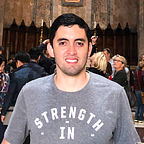Computer vision applications: Image as visual data
There are many new business applications for computer vision. Are you already aware of them?
Image has been captured in digital form since the 1970’s, but only recently with advances in cloud computing and specialized processors that business applications for computer vision and modern image classification models get out of the cave.
Now, computers can really undestand and extracting meaning behind images, a collection of pixel data which has a height, a widght, and even a depth color intensity. Images have a high-resolution and needs high computer power and scale to process quickly to get high accuracy for classification applications.
For instance, by 2006, more than half of all phones had integrated cameras. Now, there are more cameras and other sensors than the total number of people on the planet.
To give you a sense of the scale of visual data, as of February 2020, more than 500 hours of video were uploaded to YouTube every minute. This equates to approximately 30,000 hours of newly uploaded content per hour.
For images, Google reports as of 2020, approximately 28 billion photos and videos are uploaded to the service every week, and more than 4 trillion photos are stored in the service total.
Let’s see how some organizations are applying intelligent computer vision and ML classification models for their businesses.
Computer Vision Applications
Snow or clouds?
Airbus is already using image classification and recognition techniques to differentiate between clouds and snow cover. This feature is very important for planning safe flight routes and tracking weather patterns.
Take a look at the images below, Can you tell which one of the white marks are snow and clouds? The clouds are actually in the upper right-hand corner of the right image highlighted in red.
Potatoes for babies
Let’s take a look at another. Kewpie is a traditional Japanese food company, and They use machine-learning to differentiate between bad potatoes and good potatoes while making baby food.
They use a Tensorflow model with pictures of diced potatoes, not even the whole potato.
After training, the model was able to pick out the bad potatoes with near perfect accuracy, which reduces the overall volume of cases for the plant workers to review themselves.
Of course, the success of models depends on the labeled image provided by team of workers. They labeled image of good high-quality data and bad diced potatoes and not hard-coded rules.
Like, if it’s a green potato if you see that then it’s bad. The model itself figures the rules between your training dataset that’s labeled and ultimately the correct output.
Economic Forecast — Ship Tracking
This example is not usual for many people. There are some companies especialized within economic forecast that tracks the global fleet of container ships via satellite imagery. Knowing the amount of cargo being carried, they use this data to adjust their economic forecast in days or months ahead of the official numbers.
In fact, everyone can track those ships, there are many webservices that you can use to get this public or private information
Medical applications
Computer vision is becoming a fundamental tool to help doctors to classfy medical images. It is possible to diagnose medical conditions like diabetic retinopathy earlier when it’s easier to treat and prevent blindness.
Diabetic retinopathy is one of the fastest growing causes of blindness. With nearly 415 million diabetic patients at risk worldwide. If caught early, the disease can be treated. If not, it can lead to irreversible blindness.
The Google Teams model showed that the results that ML algorithms performance is on par with that of ophthalmologist who then use it in assisting and making diagnoses.
Recently, these models have been even outperforming humans and some particular image domains. They will be responsible to save many lives in future years.
There are others applications such as generation of captions that describe what’s going on in an image like map of dependencies or pose estimation. There’s a lot of really impressive use cases for machine learning, like detecting objects and images, helping you to detect diseases, even building real-time road data to enable cars to drive themselves.
This field will grow a lot in the following years and change the way we interact with video and images.
Let's see.
References:
